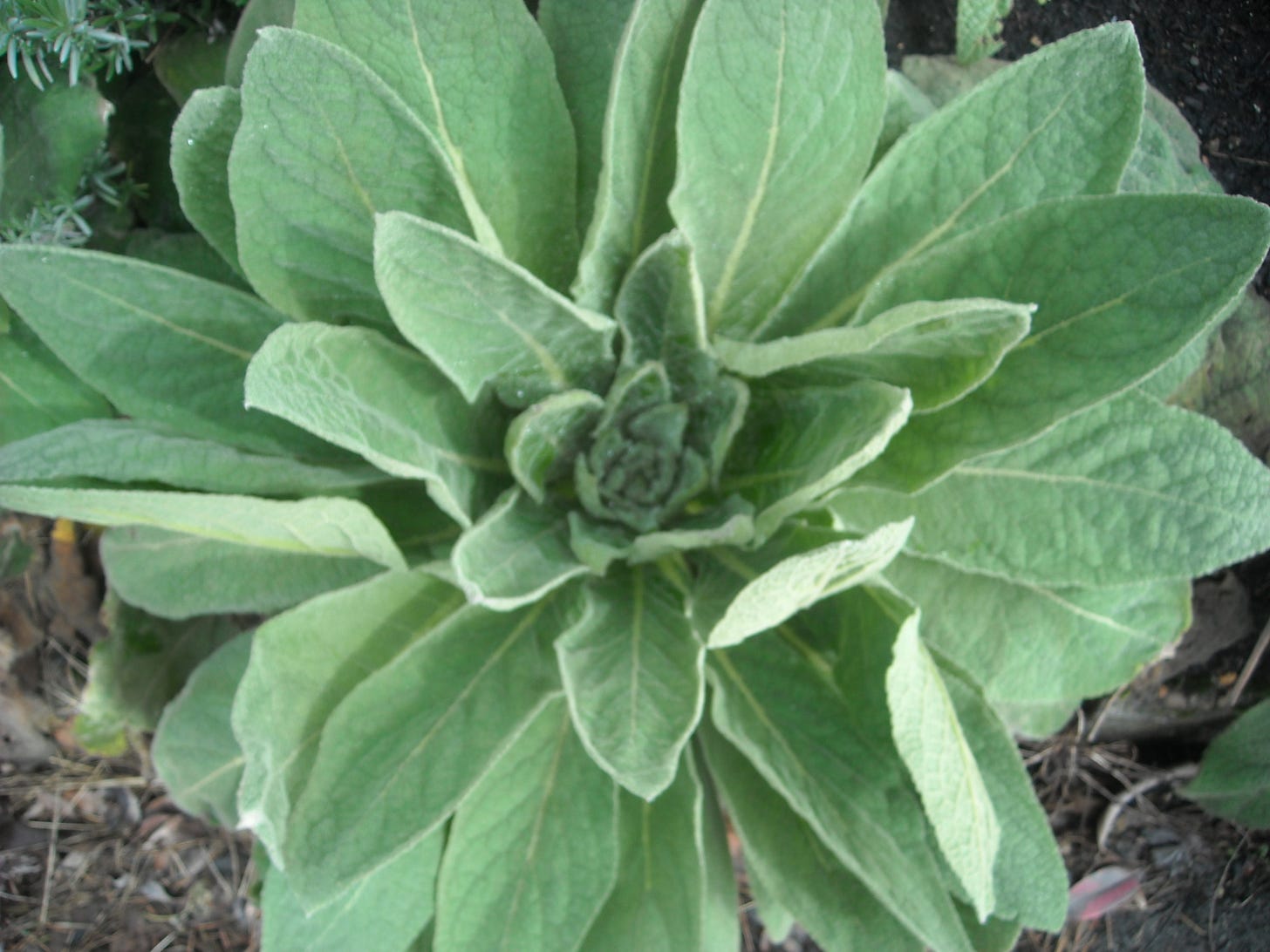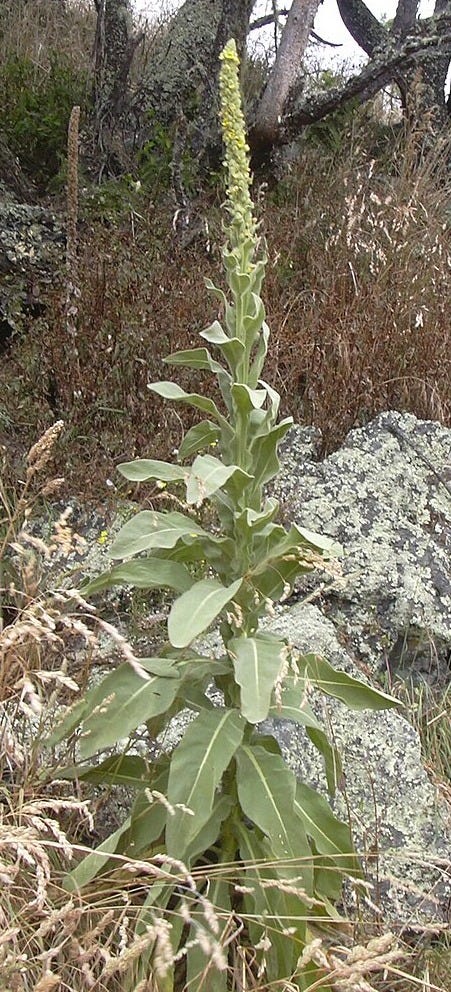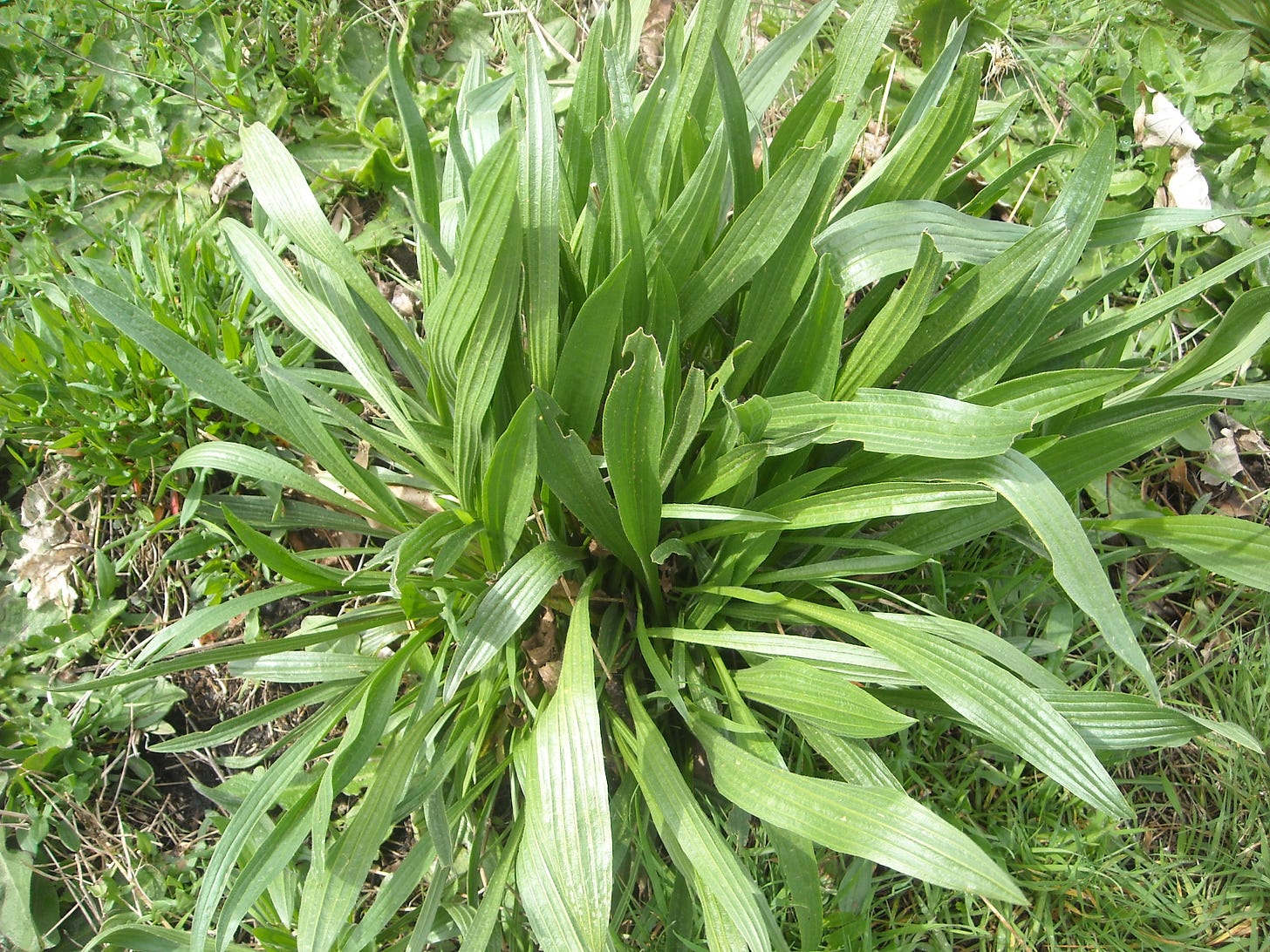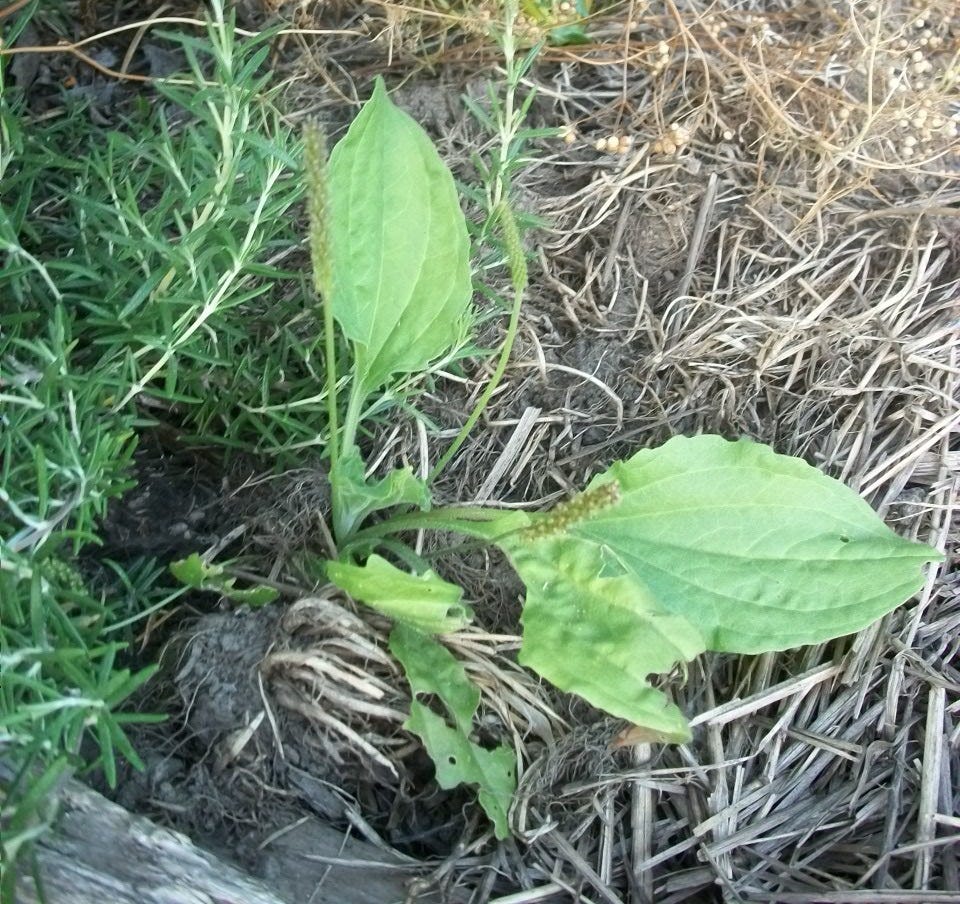The Health Benefits of 3 Lowly Spring Weeds
Think before pulling or killing. These medicines are gifts.
Recently I walked, camera ready, through my neighborhood here in Portland, Oregon. I photographed beautiful examples of some spring herbs. Too often, they are disregarded as lawn disruptors and sprayed with weed killer.
Let’s look at their medicinal value — and how to take advantage of what is showing up in your life, offering itself as medicine.
Mullein (Verbascum thapsus)
This one was growing right near the curb as I walked by someone’s abundant front-yard collection of young, first-year Mullein plants.
Mullein leaf
Mullein leaf is one of the most valuable and helpful herbs for all conditions of the respiratory system. Expectorant, antitussive (stops coughs), demulcent (lubricating), antispasmodic (relaxing, stops cramps/spasms), astringent, anodyne, and vulnerary (repairs damage to cells).
Be sure to finely filter any tea you make with Mullein aerial (above-ground) parts. It has fine hairs that can irritate the mouth, throat, and stomach if ingested. Use a coffee filter or similarly fine cloth.
The greatest benefits of Mullein for the respiratory system may come from an unheated extraction.
Mullein can be paired with an herb like Hydrangea to relieve blockage of gravel or sludge in the gallbladder or bile ducts — painlessly.
Mullein flower
Comes on in the second year. Here is a second-year plant putting up its flower stalk, as it does in summer.
Mullein flowers are sedative (calming) and anti-inflammatory. They could be used as an alternate to Chamomile.
A close-up of the flower:
Mullein root
Plantain (Plantago spp.)
Here are a couple good examples of Plantago lanceolata (ribwort Plantain), the narrow-leaved Plantain whose leaves are lance shaped. They were growing in clumps and patches not far from the edge of someone’s yard.
Plantain leaf is one of our most well-rounded and useful herbs. Even as an herbalist I overlooked it for far too many years.
Plantain is excellent for stopping attacks of kidney stones (urinary blockage: strangury, aka stranguria).
It has been used this way for hundreds of years in Chinese medicine as a primary single herb for this purpose.
It scales up in dose very well and can be taken in sizable doses every half hour or so to stop pain and clogging from kidney stones.
Plantain is diuretic, mildly demulcent, a blood-cooling refrigerant, alterative (blood purifier/detoxifier), astringent (toning), vulnerary — and tremedously anti-inflammatory. It may be the most effective anti-inflammatory herb (aside from Cannabis indica) that I’ve ever used.
It can get rid of inflammation accompanied by fluid/phlegm accumulation in a matter of hours or a couple days.
It can be very helpful in conditions where both urinary and digestive (liver/gallbladder) are out of balance. It is one of our most reliable detoxifying herbs.
It was not until I had the terrible pains of kidney stones in 2020 that I experienced its real powers and benefits. Here is the cute little Plantago major that popped up in my garden that summer and got my attention right next to the Rosemary:
Plantain is used in Chinese medicine as diuretic, to clear heat (toxins/inflammation), clear phlegm, and improve vision rendered blurry by rising liver heat. I can attest that it works very well for these purposes. It relieves pressure and inflammation in the gallbladder due to stones, polyps, or bile congestion.
I’m using it even now with these benefits.
Dandelion (Taraxacum officinalis)
Dent-de-lion, French for ‘tooth of the lion’, you can see the tooth-like pattern of their leaves.
These beauties are popping out like millions of little Suns everywhere. Yards and meadows are virtually glowing with their yellow lights.
Their presence in numbers can indicate compaction and low calcium in the topsoil. Besides being edible and rich in nutrients, they can also be quite medicinal in concentrated forms and significant doses.
In general, Dandelion is digestive, diuretic, anti-inflammatory, mildly laxative, and very nutrient-rich.
Dandelion leaf is more diuretic than the root; a bitter green that can help you secrete bile and cleanse the blood, but which is loaded with nutrients. So it puts back nutrients possibly lost during cleansing. It is just as effective a diuretic as any Rx drug — and far safer.
The flower contain several polyphenols and flavones. That gives it some antioxidants, but these are greater in the leaves.
The root is more tonic (richer nutrients) and cholagogue (bile-inducing). So it is more for the liver and gallbladder.
Both are used together as a whole plant remedy. Pu Gong Ying in Chinese medicine.
What herbs have suddenly appeared in your surroundings?
The plant world responds to human consciousness. Sometimes our subconscious speaks so clearly to our world that it presents us with a gift we consciously did not know we needed.
Is there a plant that has sprung up this spring and has gotten your attention?
Do you know what it is?
Let’s talk medicine, share pictures, and create clarity.










